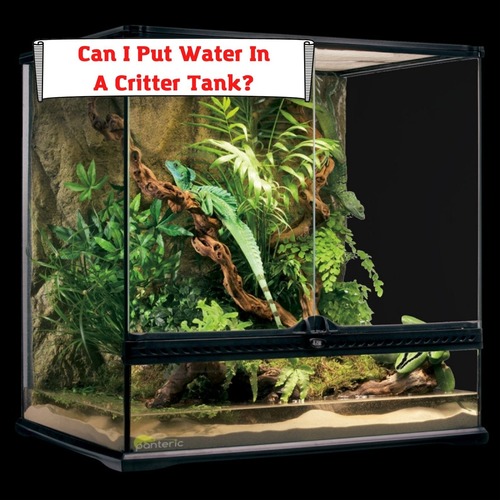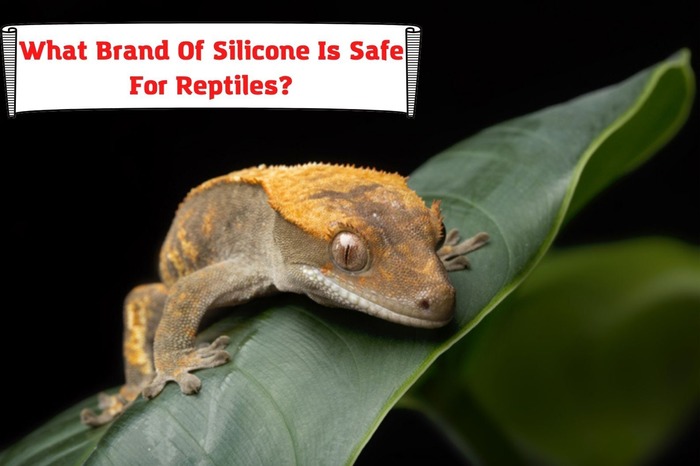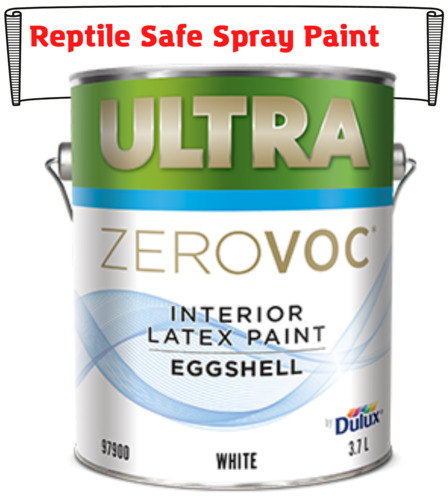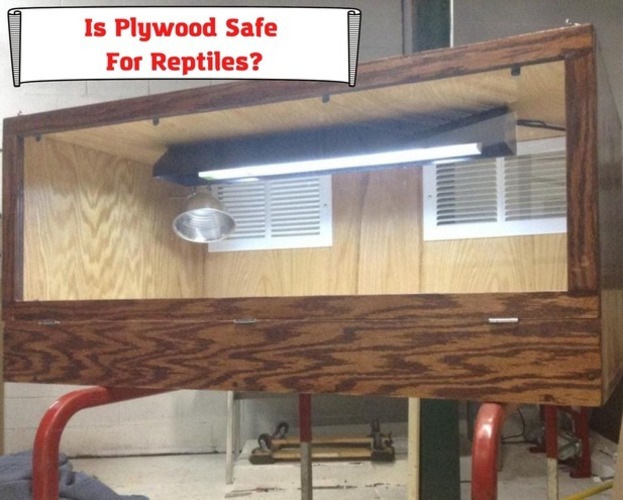There are several substrate options on the market. While many pet owners like to choose based on their pets’ personality, the critter’s safety is the main consideration for many others. This is the case with slate tile for leopard geckos.
Are you wondering how safe slate tile is to use for your leopard gecko?
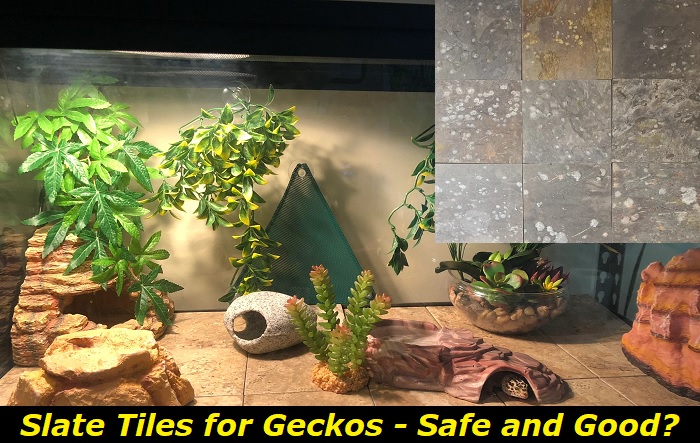
Check out this detailed article as it discusses how safe slate tiles are for your pet, some downsides of slate tiles, and a few tips to help make your slate tile safer for your reptile.
Read on to find out!
Is Slate Tile Safe for Leopard Geckos?
Slate tile is perhaps one of the safest substrates for the leopard Gecko, especially if you really want to play it safe. It is the best for many reasons, but the most important reason is that it is safe for your Leopard Geckos.
Here are a few reasons slate tiles make one of the best substrates in a Leopard Gecko enclosure:
1) No Risk of Impaction
There is a risk to using loose material for a substrate in the gecko’s enclosure; the risk of impaction from eating particles of the loose substrate material. This is one of the lethal causes of health issues for Leopard Geckos.
When you leave your gecko in an enclosure full of a loose substrate, such as soil, there is a high risk of blockage in your pet’s gastrointestinal tract. Although your pet is not likely to eat the sand or the particles of any other loose substrate deliberately, it may do so by accident when it picks other food items with its mouth.
This is what is referred to as impaction, and the health challenges that often result from it are usually life-threatening.
But this risk is avoided when you opt for slate tiles. They have a rigid layout, so there is no chance that your pet will eat sand or other impaction-causing particles when you place some food on the slate tile substrate.
2) Mimics the Leopard Geckos’s Natural Habitat
Apart from helping you reduce the risk of impaction with your pet, slate tiles also help your pet exhibit its natural traits. This is possible because the slate tiles mimic the natural environment of the leopard gecko.
Leopard geckos are native to Asia and some middle eastern countries. These countries include India, Pakistan and Afghanistan, and Iran. But they love to stay on rocky planes, and slate tiles offer them identical planes as they would normally have access to in the wild. Leopard geckos love and prefer rocky planes to sand or loose substrate in general.
Providing them with slate tiles as a substrate will stimulate them to exhibit their natural behavior as they would in the wild. This is pretty much unlike when you put them on sand or paper, and they have to learn to adapt to their new environment.
3) Easy To Clean
Another obvious reason slate tiles are safe to use in a leopard gecko’s enclosure is that they are easy to clean. The ease of cleaning the slate tile makes it pretty safer than many other types of loose substrates.
Unlike paper towels that must be wholly replaced or a loose substrate that needs to be thoroughly cleaned whenever your pet passes out waste, you only have to clean the slate tiles and maybe use a few drops of disinfectant.
4) Holds Heat Well
The ability of slate tiles to hold, distribute and retain heat for a long time is perhaps one of the main reasons slate tiles are pretty safe for leopard geckos.
It is important to remember that leopard geckos are reptiles; since most reptiles are cold-blooded, heat is necessary to regulate their body temperatures. So using slate tiles is one of the cheapest and most efficient ways to handle the regulation of their body temperature.
Slate tiles have a pretty impressive heat retaining ability. Slate tiles can not only distribute heat efficiently, but they can also retain it for extended periods. More importantly, slate tiles can also distribute heat pretty rapidly, which is why many leopard gecko owners love using them as a substrate.
5) Fire Resistance
Fire resistance is one of the core considerations when putting an enclosure together as a responsible petty owner. In the event of a fire outbreak, paper towels and loose substrates will readily catch fire compared to slate tiles.
Interestingly, slate tiles are so fire resistant that they can withstand heat and very high temperatures well. Slate is obtained from the repeated stacking of metamorphic rocks. It is so heat resistant that it is widely used in the construction industry to build floors and roofs because it is an excellent fireproof material.
So, in the unfortunate event of a fire outbreak in your place, using fireproof materials like slate tile to construct your reptile enclosure is a great way to ensure that your pet has a higher chance of surviving a fire outbreak. The slate tiles could delay the fire from reaching your pet and offer you enough time to save your pet from the fire.
Some Downsides of Slate Tiles to Keep in Mind
Although there are many reasons slate tiles are safe for your leopard gecko’s enclosure, there are many other downsides you ought to keep in mind if you opt for using slate tiles in the enclosure. Below are a few of them:
1) Does Not Provide Enough Enrichment as Loose Substrate Does
Although slate tiles are a great substrate option, you cannot provide your pet with the enrichment that loose substrate usually offers. Loose substrate enriches your pet’s life in many ways. It allows your pet to exhibit several behaviors, such as foraging.
Some special loose substrates retain humidity which is essential for reptiles that need high humidity levels, especially during shedding and food digestion.
You also want to keep in mind that some geckos, especially leopard and crested geckos, burrow under the substrate to bury themselves occasionally. They usually do this to escape discomfort, regulate their body temperature, and regulate their humidity and stress levels. These are some of the enrichments that slate tiles cannot offer your pet.
2) Gets Dirty Easily and Needs to Be Cleaned a Lot
You will have a dirty substrate floor when you feed because of the calcium powder you dusted on the insects. Slate tiles are rigid. So, they easily get dirty, which may make your cleaning routine more frequent.
You have to clean the slate tile once or twice every week, which can be tiresome since you do not want to clean the whole enclosure. This is one of the many reasons many pet lovers usually choose other types of substrates.
Sometimes you can really see the dirt build-up on the slate tile when you take too long to clean. This can lead to health issues for your pet.
3) Needs To Be Cut to Fit into the Enclosure
Almost always, the tiles need to be cut to fit the floor of the enclosure. Although sometimes, you might get an enclosure large enough to fit the slate tiles without any need to be cut.
But many times, the tiles will not fit without being cut and reshaped to size. If your enclosure is like this, you will need to cut the slate tiles to the appropriate sizes that will fit the base of your enclosure.
It is important to note that it would be best to use the appropriate tools for this job as you may end up damaging the slate tiles if you use the wrong work tools. You will also have to make the cut edges blunt to avoid the chances of any bodily injury to your pet.
Also, if you do not cut the tie with precision, you may end up leaving gaps between the tiles which can be dangerous for your pet. This can cause severe health problems, such as fractured bones, in the event that your pet slips one leg or a finger into the cracks or holes between the tiles.
Tips To Make Slate Tiles Safer for Your Pet
You should learn a few tips as a responsible pet owner if you want to go the extra mile to keep your pet safe. Here are a few to keep in mind:
Place the tiles gently in the enclosure after cleaning them. If you are not careful, you could break the glass door when replacing the slate tiles after cleaning them. Apart from the cost of replacing the glass walls of your enclosure, tiny glass particles accidentally left in the enclosure could lead to severe bodily injuries after you return your pet to the enclosure.
Be mindful of the chemicals you use in cleaning the slate tiles. This is especially important for pet owners who have sealed the gaps between the slate tiles. Since you can not remove the slate tiles to clean them, cleaning must be done in the enclosure.
The danger here is that you risk exposing your pet to toxic chemicals, which can lead to fatal consequences. If you have sealed the slate tiles in your enclosure, you want to wipe the slate tiles clean with ordinary water after the cleaning with whatever chemical you use.
It would also be best to let the enclosure, particularly the slate tiles, air-dry before returning your pet to it. This will ensure that your pet is not exposed to any dangerous chemicals.
- Dubia Roach Egg Sack: How To Understand if It’s Healthy? - January 2, 2023
- How To Feed African Dwarf Frog While on Vacation? - December 26, 2022
- Baytril for Bearded Dragon: Here’s What You Should Know - December 19, 2022
